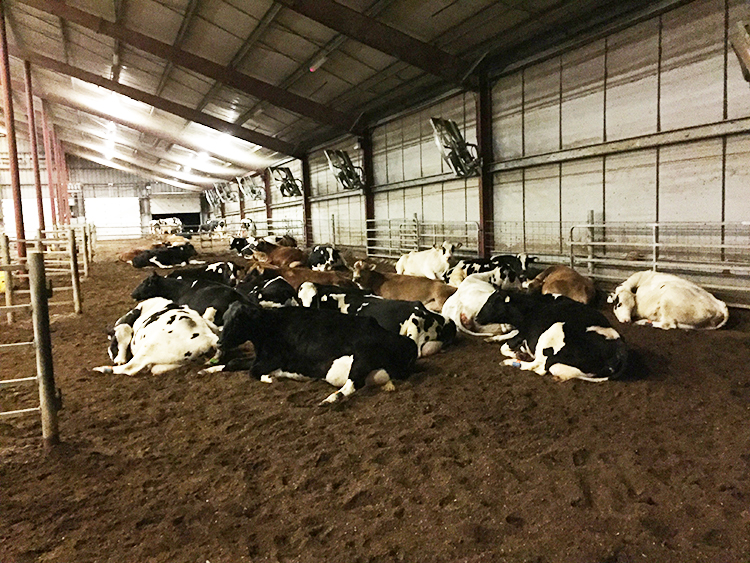
The compost-bedded pack barn is a housing system that may reduce building costs, allow mid- and long-term manure storage, and ensure cow comfort when properly managed. As we get into the winter season, a refresher of good management practices for compost bedded-pack barns is warranted.
If a single key word should be used to ensure adequate conditions of the compost-bedded pack barn, my word of choice is aeration. Research from the University of Kentucky has shown that the moisture level of the bedding comes down when the temperature of the compost rises, and that aeration helped lift the temperature of the compost bedding. Therefore, if you want to ensure comfortable cows, be sure you aerate the bedding frequently, adequately, and neatly.
Aerate late and often
As we get into the winter season, the practice of aerating the compost becomes more important than ever. Because frequent aeration helps raise the temperature of the compost, it is recommended to stir the compost two or three times per day during this time of the year. If labor limitations exist and frequent stirring of the compost is not possible within the same day, consider stirring in the late afternoon or evening to have the greatest aeration during the night, when temperatures are colder.
During the winter, stirring the compost late in the day can be even more important for herds that use compost-bedded packs for their maternity pens. In a recent case, we evaluated the percent of deaths on arrival (DOA), which is the percentage of stillborn calves or calves that die within 24 hours of calving, on a farm that stirs the compost only once a day during the morning. While their annual DOA rate equaled 5%, monthly averages for December and January surpassed 12%. Even though an increase of DOAs might be anticipated for the colder months, such a jump in DOAs might indicate that better management of the compost is needed.
Finally, keep in mind that adding new bedding material is also critical to keep the bedding as dry as possible. Consider more frequent additions of fresh bedding material during the cold winter season.








